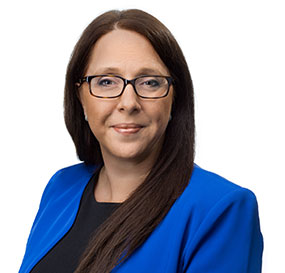
It has taken time, but advanced technology is becoming a standard in skilled nursing and rehab facilities. Technological solutions are helping to improve patient experiences while also supporting staff in providing the highest levels of patient care and safety.
With many options available, and a need to spend efficiently, post-acute facilities must carefully choose which technologies they utilize. Our first consideration is clinical effectiveness, but afterwards, many other aspects factor into our purchasing decisions. For instance, we insist that new technologies be easily adaptable for staff. An empowered and happy staff leads to satisfied patients. Technology that cannot be easily adapted into workflow, or which demands a large amount of time, will likely be ignored.
We also work to ensure that our patients’ families understand and are comfortable with the technologies we use. They are entrusting us with their loved ones, and well-designed tech can ease some of their concerns. Similarly, hospitals who refer their patients to our facilities are entrusting us to continue providing a high level of care. Their approval is important to us and when they see that we are equipped with the most advanced technologies in the industry it instills the providers with confidence.
With this in mind, here are five ways the Allure Group has implemented technology to make our facilities state-of-the-art and more patient friendly.
- Adopting contact-free continuous monitoring – Non-invasive care is important for treating post-acute patients and increasing their level of comfort. Removing monitoring wires is a great way to make the patients feel more at home. We use contact-free sensors, placed under a patient’s bed mattress, to continuously monitor heart and respiratory rates and collect a large data samples. This helps us identify potential health issues before they manifest and creates opportunities for early intervention, increasing efficiency and keeping our patients safe.
- Boosting the speed and comfort of rehabilitation – One of the great challenges of rehab is maintaining a balance between exercise and rest. To address this problem, we use an anti-gravity treadmill that allows a patient to begin rehabilitation mere days after major surgeries. It works by redistributing weight to take pressure off recently repaired areas while still allowing for vigorous exercise. Like many positive rehab technologies, the treadmill does not only help the patient’s physical rehabilitation, but by allowing them to get moving quickly, it helps their mental state. We have had patients begin moving days after reconstructive knee surgery. Similarly, robot-assisted therapy helps patients who may otherwise be immobile to quickly start important rehabilitation steps such a gait training.
- Engaging patients in their rehabilitation – Encouraging patient participation in their own rehab is key. If the patient is engaged, rehab will likely be quicker and more effective. Furthermore, the importance of generating clear, measurable results during rehab is very important for our staff. We have found that incorporating gamified therapy into the rehab process incentivizes our patients to participate wholeheartedly and provides staff with accurate measurements of progress. The systems work by mounting a camera on a television, having it track movements of the patient and then incorporating those movements into a game on the television. We have seen tremendous positive impact with this method, for both staff and patient engagement.
- Expanding access to medical care with telehealth – Patients coming from a hospital are accustomed to constant access to doctors that is difficult to match outside the acute care setting. Telehealth platforms grant instantaneous access to medical professionals allowing us to cover the 7 p.m.-7 a.m. shift in a way similar to hospitals.
Telehealth has also combined very well with our continuous monitoring technology. After the monitors warns us about an impending event, we can have that patient in front of a doctor in minutes, at all hours of the day. Telehealth has played a major role in making families feel at ease that their loved one is taken care of day and night.
- Maximizing your EMR– Standardizing use of electronic medical records (EMR) across post-acute care facilities can make managing the patients at those facilities much easier. Standardized EMRs allow for the sharing of information between facilities, staff and providers creating greater organizational flexibility in responding to the needs of the patients.
To increase efficiency of data entry into the EMR, we utilize a system that allows us to immediately upload newly measured vitals without the need for our staff to input them. This saves staff time and reduces the chance for costly input errors.
With the incorporation of all these technologies into our facilities, we have seen our outcomes continue to improve. We now enjoy access to large amounts of patient data that can be analyzed more quickly and accurately than other facilities who are behind the curve. At the same time, our staff and patients have access to clinically proven technologies, which quickens the rehab process.
As a result of our technologies, patient outcomes have improved, and our facilities have benefited as a result. There is no doubt that patients and their families will come to expect these advances in any facility that they choose to work with. The new technological standard will benefit our patients and help them get back on their feet and moving as soon as possible.
Melissa Powell is the President and COO at the Allure Group. She has more than 20 years of experience in coordinating, assessing and improving senior care in New Jersey and New York City.





